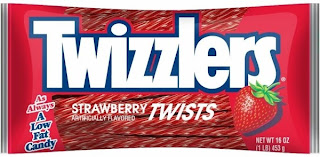At home I always considered myself in the know as far as current events are concerned. But here I was feeling lost.
Some of my current events helplessness was remedied in November when the owners of Battle Creek’s Coney Island Café, avid readers of my articles, bought me a Time magazine subscription.
And while those help my big picture news dilemma, I was still lost on the day-to-day happenings of the rest of the world, due to the time that it takes the magazines to travel here.
So, this past Christmas my Dad sent me a radio. It was the only thing that I could actually think of that I really wanted, and needed.
 |
| My good friend Nick came to visit and every night he was with me we listened to VOA. He's as much of a fan as me or any other PC Volunteer. |
There is only so much I can get from asking locals through my broken language skills about what is going on in the world, and only so much that they can even report to me.
So when I got the radio, all my current events problems were over.
Most people know about the British Broadcasting Channel’s reputation for keeping the world and its English speakers informed, and I’ll be the first to give them credit. With their impressive accents, reports from every nook and cranny of the globe, and long history -- the BBC was started in 1922 -- it’s well-deserving of all credits and accolades.
But I’d like to talk about another station that my small shortwave radio is constantly tuned to -- the Voice of America. Did you know our federal government has an international radio station? I had no idea it existed until I came here, but it’s been around for more than 60 years.
I affectionately refer to it as my favorite propaganda. Coming over my airwaves at 5 p.m. local time and signing off at 8 p.m., its programs are full of American music, news from the homeland, global updates and Africa-specific headlines. While my Time subscription adds meat to the news stories I hear about, VOA breaks those stories first.
Started in 1942 during the buildup of the Cold War, VOA’s mission is to promote American government, our culture, and our views throughout the world -- specifically in developing nations.
Currently, VOA broadcasts in more than 70 countries, including Zambia, but more importantly to some global hot spots like Pakistan, Burma and Mali.
When VOA first comes on the air, it’s with the tune “Yankee Doodle.” I’m not making that up. Then during the broadcast there’s always an editorial from the U.S. government about our views, culture, history or maybe a mix of all three.
My favorite program of VOA’s is one called Border Crossing, anchored by Larry London. Hearing him is like hearing an old friend every Monday through Friday for one hour.
I’ve been tempted to look him up online, but I’ve resisted in favor of deferring to my imagination’s rendering, which looks something like JFK meets a GI Joe.
 |
| I couldn't resist and had to look Mr. London up. Turns out he rubs elbows with the likes of Beyonce. What a guy... |
Mr. London takes requests for music and does the occasional interview with singers and bands, but the music is why most listeners tune in. It’s nice to hear music from home, even if it is something that I would never listen to in the States, like Toby Keith or Madonna.
It’s also nice to hear an American voice in a foreign land, which is why I said he’s like an old friend. There must be some sort of psychologically calming effect to do with that.
All in all, my radio and the three hours daily of the Voice of America make home and Americana seem not so far away.
 |
| Above is a facebook message I got about this article. It's the little things that matter, like a 30 second long shout out. |
And with Larry London continually on the air I’m not likely to pull a Benedict Arnold and jump to the BBC anytime soon. That’s a promise, and with that I’m signing off.
Note: This article was printed in the BC Enquirer on June 12, 2013.





.jpg)







